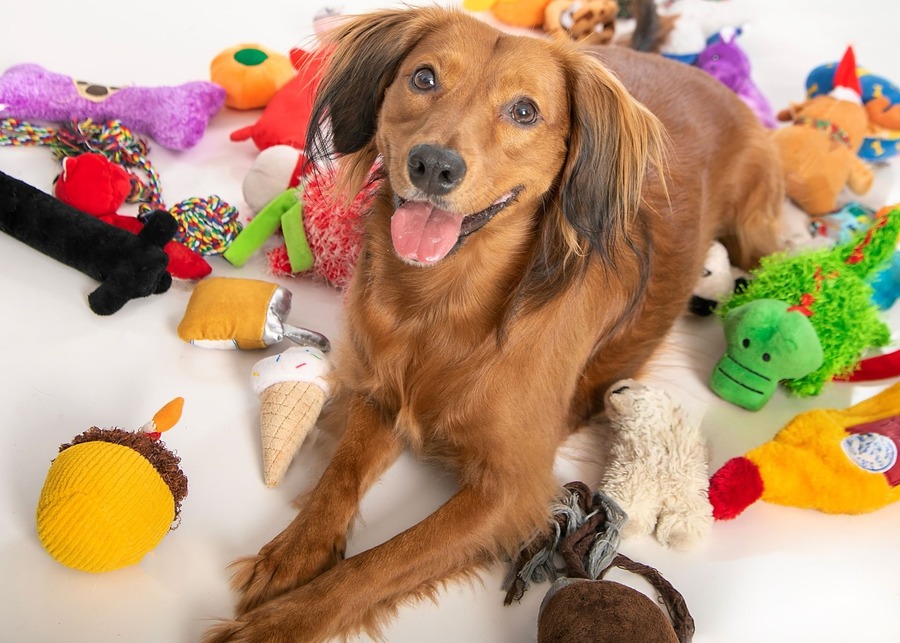Struggling to find a high-margin product that truly stands out? Launching a custom toy feels complex and risky. We show you how to turn funny ideas into real profit for your business.
Success comes from treating "funny" as a business strategy. Focus on designs with viral potential, choose a manufacturing path (ODM/OEM) that fits your model, and partner with a manufacturer who manages risk and ensures safety. This turns a fun concept into measurable profit.
You see the potential, but how do you move from a general idea to a concrete plan? It starts with understanding why this market exists and what truly drives sales. This isn’t just about cute pictures; it’s about real market dynamics. I’ve spent over a decade helping businesses navigate this, and I’ve learned that the most successful brands treat this process like a business plan. Let’s break down the blueprint for turning fun into a tangible, profitable asset for your brand.
Why is There a Market for Funny Dog Toys?
Worried your products are getting lost in a sea of lookalikes? Competing on price alone is a race to the bottom. Stand out with products that essentially market themselves.
The market for funny dog toys is driven by powerful, modern trends. They generate free social media marketing (UGC), command a higher price through emotional connection, and satisfy the ‘pet parent’ desire to share their pet’s personality online. It’s a self-fueling cycle of visibility and sales.
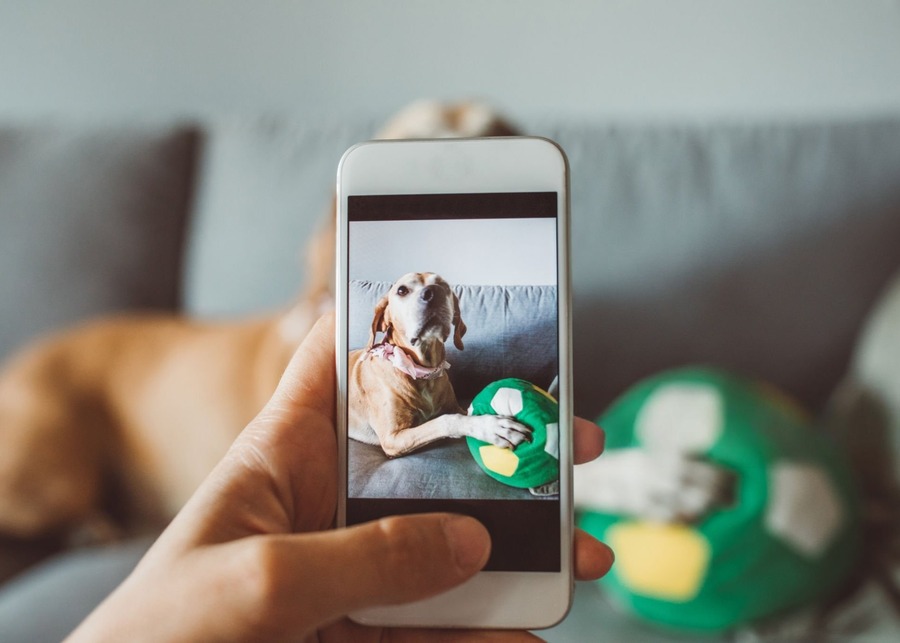
When we look at the market for funny dog toys, we’re not just talking about what pet owners like. We’re conducting a market investment analysis. The value isn’t just in the toy itself, but in the business opportunities it creates. I see three core market drivers that make this category a smart investment for any pet brand.
The Social Media Multiplier
A truly unique or funny toy is a magnet for user-generated content (UGC)1. When an owner buys a plush toy that looks like their favorite brand of soda, they don’t just give it to their dog—they take a picture and post it online. This is free, authentic advertising that reaches a highly targeted audience of other pet lovers. The return on investment (ROI) from this organic marketing2 can far exceed traditional ad spend.
The Power of Emotional Premium
Humor creates an emotional connection3. It makes people smile. When a product does that, it moves beyond being a simple commodity. Customers are willing to pay a premium for a product that brings them joy and reflects their personality. This emotional premium allows your brand to step out of the price wars and build a loyal following that values creativity over cost-cutting.
The ‘Pet Parent’ Economy
Modern pet owners often see their pets as family members. This "pet parent" mindset means they invest in products that enrich their pet’s life and allow them to express their pet’s (and their own) personality. A funny toy is a perfect way to do this. It taps into the desire to "show off" one’s pet, creating a sustainable demand for visually interesting and shareable products.
What Funny Toy Designs Actually Sell?
Have a great idea but not sure if it will sell? Guessing what customers want can be a costly mistake. I’ll show you the proven formulas for successful designs.
The most successful funny toy designs follow clear formulas. These include parodying common human items, extending your existing brand identity into a pet-friendly format, or creating interactive humor that engages both the pet and the owner. These patterns are your roadmap to a bestseller.
Over the years, I’ve seen countless dog toy design ideas for business, but the ones that consistently succeed aren’t random flashes of genius. They follow replicable creative formulas. Instead of hoping for inspiration, you can use these proven patterns to develop a product with a high chance of market success. This structured approach turns creativity into a reliable business process.
Proven Formulas for Toy Design
| Formula | Why It Works | Prime Example |
|---|---|---|
| Human Item Parody | Leverages the owner’s familiarity with everyday objects (like a phone or a coffee cup) and creates humor through the adorable contrast of a dog playing with it. | A plush "Pup-si" soda can or a "Chewy Vuitton" handbag. |
| Brand Identity Extension | Uses your core brand’s assets to create a new product, strengthening brand loyalty and reaching a new audience segment within your existing customer base. | Our client Garrett turned his best-selling pickleball paddle design into a plush dog toy for his customers’ pets. |
| Interactive Humor | The fun comes from the interaction between the pet, the toy, and the owner. This creates shared moments of joy that are highly memorable and shareable. | A "hide-and-seek" puzzle toy where dogs pull smaller plush toys out of a larger one, or a toy that makes a silly, unexpected noise. |
By understanding these formulas, you can evaluate your own ideas more critically. Does your idea fit one of these patterns? If so, you’re already on the right track to creating a toy that doesn’t just look good, but actually sells. This is a crucial step in your pet product brand extension strategy.
How Do You Turn an Idea into a Custom Toy?
Worried your vision won’t be made correctly? A great idea can be ruined by poor execution and wasted investment. We manage the process to protect your investment at every step.
Turning an idea into a physical toy involves a structured process designed to manage risk. It starts with professional design files to ensure clarity, moves to material selection for safety and durability, and requires prototype approval before mass production. Each step is a checkpoint to protect your investment.
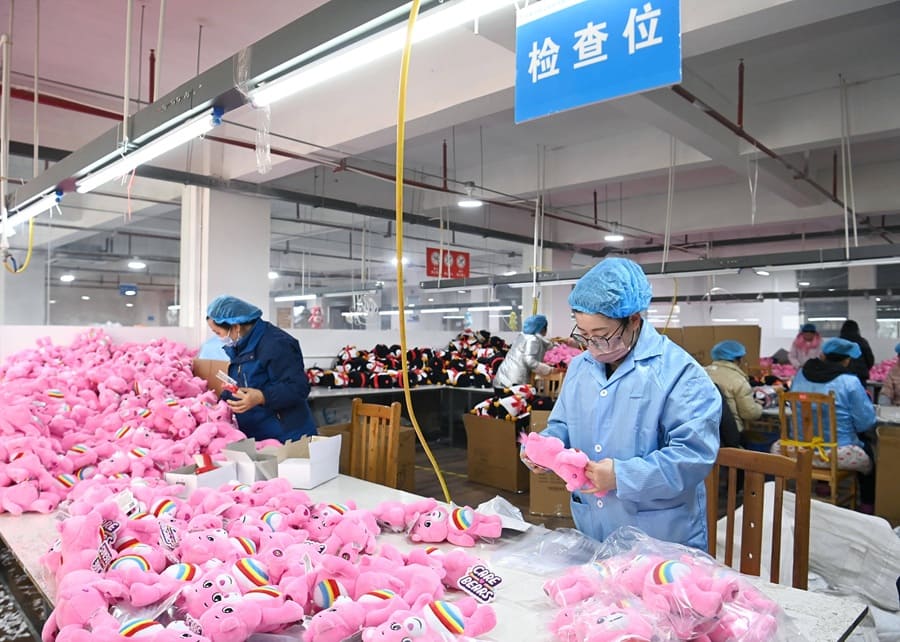
The biggest fear for any B2B client is, "I have this amazing idea, but what if the factory gets it wrong and my money is wasted?" I understand this completely. That’s why we’ve refined our process to be more than just manufacturing steps; it’s a risk management system. We don’t just make your product; we protect your vision and your capital from concept to completion. This is the core of how to manufacture pet toys responsibly.
From Concept to Reality: A Step-by-Step Risk Shield
-
Professional Design & Specification: The process starts with a detailed design file or "tech pack." This is our shared blueprint. It specifies everything from dimensions and colors to stitching types. Risk Mitigated: Miscommunication and ambiguity. A clear blueprint ensures we are all working towards the exact same goal, eliminating costly "I thought you meant…" errors down the line.
-
Material Sourcing & Vetting: Based on the design, we select the right fabrics, stuffing, and squeakers. We don’t just pick the cheapest option; we choose materials that meet safety standards and durability requirements for the toy’s intended use. Risk Mitigated: Safety failures and product returns. Using vetted materials protects pets and, in turn, your brand’s reputation.
-
Prototyping & Sampling: We create a physical sample for you to hold and approve. This is the most critical checkpoint. You get to see, feel, and test the product before committing to a full production run. Risk Mitigated: A final product that doesn’t match your vision. The sample ensures the mass-produced toys will be exactly what you approved, with no surprises.
Should You Choose ODM or Private Label (OEM)?
Unsure which manufacturing path is right for your business? Choosing the wrong model can limit your brand’s potential or slow your market entry. Let’s clarify the best fit for you.
Choose ODM (Original Design Manufacturing) if you want to create a unique, custom product to build brand equity, like our client Garrett. Choose OEM (Original Equipment Manufacturing), or private label, to quickly bring proven products to market under your brand, like our client Judy.
This isn’t just a technical choice; it’s a fundamental business strategy decision. The right path depends entirely on your goals, resources, and business model. As a custom dog toy manufacturer, we guide clients through this choice every day. I’ve seen firsthand how aligning your manufacturing path with your business strategy leads to success. We can think of it as choosing between being a "Brand Builder" or a "Market Optimizer."
ODM: The Brand Builder’s Path
ODM is for visionaries who want to create something completely new. This is the path our client Garrett took. He had a unique idea to turn his pickleball paddles into dog toys to extend his brand. With ODM, we worked with him from a sketch to a completely new, proprietary product.
- Best for: Brands wanting to establish a unique market position and build long-term brand equity.
- Focus: Innovation, differentiation, and higher profit margins.
OEM (Private Label): The Market Optimizer’s Path
OEM, or what many call private label pet toys, is for businesses that want to leverage existing, market-proven designs. Our client Judy, a pet store chain owner, uses this model. She selects best-selling items from our catalog, and we produce them with her branding.
- Best for: Retailers and e-commerce businesses wanting to quickly and efficiently launch a branded product line.
- Focus: Speed to market, operational efficiency, and lower upfront R&D risk.
How to Ensure Your Toy is Both Fun and Safe?
A product recall can destroy your brand’s reputation overnight. Are you confident your toys are completely safe for pets? We build safety into the entire manufacturing process.
Ensuring safety is non-negotiable and acts as insurance for your brand’s reputation. This requires a full quality control system: strict raw material vetting, multi-stage inspections during production, and final pre-shipment verification. Safety isn’t a feature; it’s the foundation of your product.
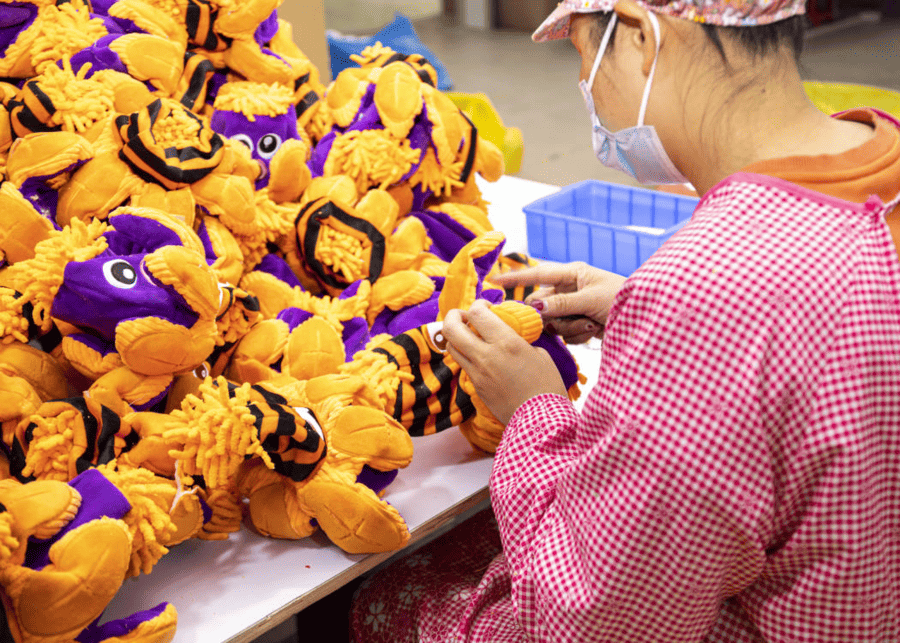
When a customer buys your product, they are placing their trust in your brand to keep their beloved pet safe. Breaking that trust can be fatal for a business. That’s why I see safety not as a line item, but as brand reputation insurance. We don’t just check for safety at the end; we build a complete quality assurance system into every step of the process. It’s about proactive prevention, not reactive problem-solving.
Our Three-Pillar Safety Guarantee
We have built our quality control around three core pillars to ensure nothing is left to chance. This comprehensive approach is what makes us a reliable pet supplies sourcing agent China for brands worldwide.
-
Upstream Control (Raw Materials): Safety starts at the source. We conduct rigorous reviews of all our raw material suppliers. Every batch of fabric, stuffing, and dye is checked to ensure it meets international safety standards and our own strict performance requirements. We prevent problems before they can even begin.
-
In-Process Quality Checks: A product isn’t just checked at the end; it’s inspected at multiple key stages of production. We check the precision of the cutting, the strength of the seams after sewing, and the consistency of the stuffing. This allows us to catch and correct any tiny deviation from the standard immediately, ensuring consistent quality across the entire batch.
-
Pre-Shipment Verification: Before your order is sealed and shipped, we provide you with total transparency. You receive photos of the finished products, pictures of the packaging, and even photos of the container being loaded. This final verification gives you complete peace of mind that what you ordered is exactly what you will receive.
How Does Unique Design Boost Your Brand’s Profit?
Struggling to justify the investment in custom design? It can be hard to see the direct financial return on creativity. I’ll show you exactly how unique design translates to profit.
A unique design directly boosts profit by enabling premium pricing and reducing marketing costs. A custom toy can sell for a higher margin than a generic one, and its ‘shareability’ on social media creates free advertising, increasing your return on investment.
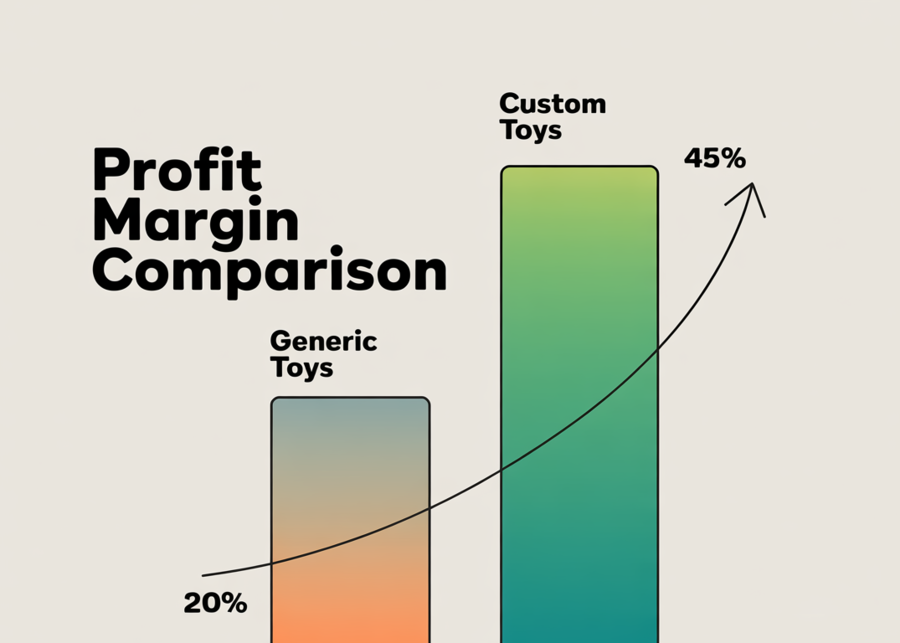
Let’s move away from abstract concepts like "brand premium" and look at the real numbers. Investing in a unique design isn’t an expense; it’s a direct input into a more profitable business model. I’ve worked with clients who have transformed their profitability by moving from generic, wholesale novelty dog toys to exclusive, custom designs. The math is simple but powerful.
The Profit Equation: Unique vs. Generic
Let’s look at a simplified profit and loss demonstration for a single toy.
| Metric | Scenario A: Generic Toy | Scenario B: Unique Custom Toy |
|---|---|---|
| Unit Cost from Manufacturer | $2.00 | $3.00 |
| Retail Price | $6.00 | $12.00 |
| Gross Margin | $4.00 | $9.00 |
| Marketing Cost Per Unit | $1.00 (Paid ads needed) | $0.50 (Lowered by free UGC) |
| Net Profit Per Unit | $3.00 | $8.50 |
As you can see, even though the custom toy costs more to produce, the return is dramatically higher. You can command a much higher retail price because the product is exclusive and emotionally engaging. Furthermore, your marketing becomes more efficient. The unique design generates its own buzz on social media, lowering your customer acquisition costs. This is how smart design directly builds a healthier bottom line for your business.
What Makes a Manufacturer a True Partner?
Frustrated with suppliers who just take orders and miss details? This reactive approach can lead to costly mistakes and missed opportunities. You need a partner who invests in your success.
A true partner does more than just manufacture; they actively contribute to your success. Unlike a supplier who just fills orders, a partner provides strategic advice, optimizes design and logistics for cost savings, and proactively solves problems before they impact your business. They are an extension of your team.
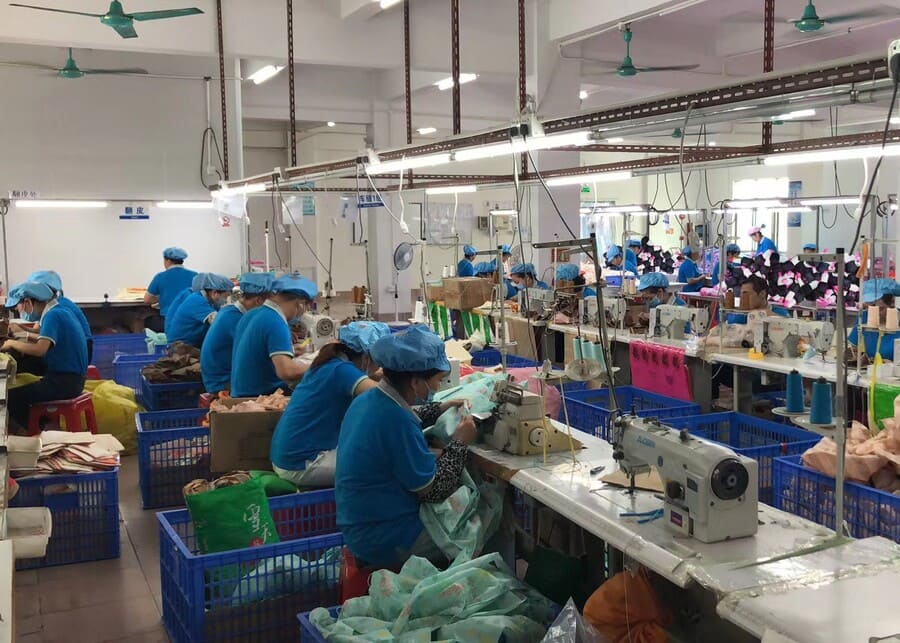
In my experience, there’s a huge difference between a supplier and a partner. A supplier is a transactional relationship; they fulfill an order. A partner is a strategic relationship; they are invested in your brand’s long-term growth. They think ahead, offer solutions you hadn’t considered, and treat your business goals as their own. When you’re building a brand, especially from overseas, this distinction is everything.
Checklist: Is Your Manufacturer a Supplier or a Partner?
Ask yourself these questions about your current or potential manufacturer. The answers will tell you everything.
| Function | A Supplier (Takes Orders) | A Partner (Invests in Your Success) |
|---|---|---|
| Design Input | "Send me the final design file." | "We can use a reinforced seam here to improve bite resistance. Have you considered this?" |
| Problem Solving | "There’s a problem with the material." | "We found a potential issue with the material and have already sourced two better alternatives for your review." |
| Logistics | "Here is your shipping quote." | "We managed to re-pack your order to reduce the carton volume by 15%, which will save you on freight costs." |
| Communication | Responds to emails. | Proactively provides updates and anticipates your questions. |
| Primary Goal | To complete this single transaction. | To help your brand grow so you can build a long-term, profitable relationship together. |
At Preeminent, we have built our entire service model around being a true partner. Your success is our success.
Conclusion
Transforming a funny idea into a profitable asset is a clear process. With the right design strategy and a true manufacturing partner, your next product can build your brand and bottom line.
-
Explore how UGC can enhance your marketing strategy and drive organic growth for your brand. ↩
-
Discover the advantages of organic marketing strategies that can save costs and increase brand visibility. ↩
-
Understanding emotional connections can help you create products that resonate with customers and boost sales. ↩

